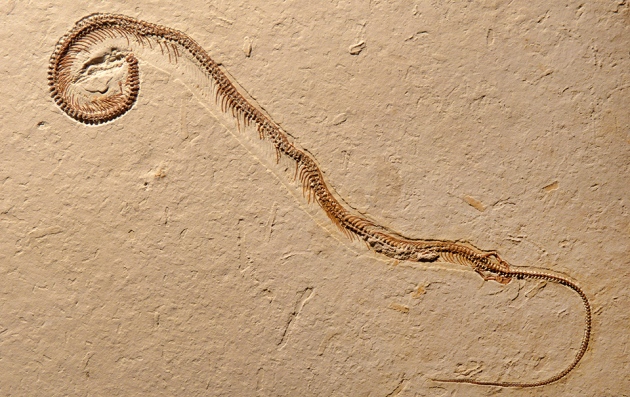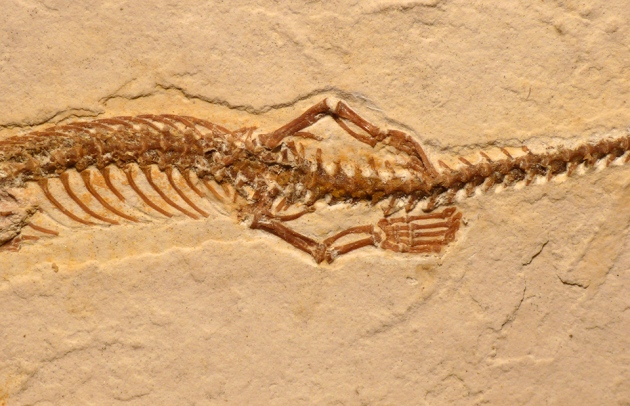Tetrapodophis amplectus was discovered a few decades ago but it sat in a private collection out of the way of scientists
Scientists have discovered a four-legged fossil snake that has turned the evolutionary history of the reptile on its head. Tetrapodophis amplectus was discovered a few decades ago but it sat in a private collection out of the way of scientists. The snake was rediscovered in 2012 and palaeobiologist David Martill of the University of Portsmouth in the United Kingdom was fairly certain that it was a snake. After examining the fossil under a microscope he was confident that Tetrapodophis amplectus was indeed a snake and not a lizard.
Snake Evolution
Snakes Probably Evolved on Land, New Research Suggests
A Brief Look At Reptile Taxonomy
Martill, German palaeontologist Helmut Tischlinger, and Dr. Nick Longrich from the University of Bath’s Milner Centre for Evolution worked on identifying the reptile, which went largely unnoticed amongst a larger exhibition of fossils from the Cretaceous period. The fossils fingers and toes are long compared to the small arms and legs, indicating that they evolved for grasping, either their prey or for mating purposes, the scientists speculate.

Dave Martill, University of Portsmouth
Tetrapodophis amplectus was discovered a few decades ago but it sat in a private collection out of the way of scientists.
The snake lacks the adaptations to its body to life in a marine environment, which was one of the first notions that snakes were derived from. Its tail lacked any type of propulsion capabilities like that of animals that come from water, but its skull and body proportions were akin to those types of animals that are known to burrow.
It has 272 vertebrae and 160 of those are of the main body and not the tail, giving it twice the number of vertebrae that researchers initially thought an animal could have before losing its limbs. The limbs on Tetrapodophis amplectus are thought to have been repurposed by evolution, rather than dwindling away to become useless, which is counter to previous assumptions about the evolution of the snake.

Dave Martill, University of Portsmouth
After examining the fossil under a microscope Dave Martill was confident that Tetrapodophis amplectus was indeed a snake and not a lizard.
"This fossil shows that the two processes can be decoupled,” said Martin Cohn, an evolutionary developmental biologist at the University of Florida, Gainesville. “From a developmental perspective, this could be one of the most important fossils ever found. The combination of a snake-like body with complete forelimbs and hindlimbs is like a snake version of Archaeopteryx.” Archaeopteryx is the missing link between birds and dinosaurs.



